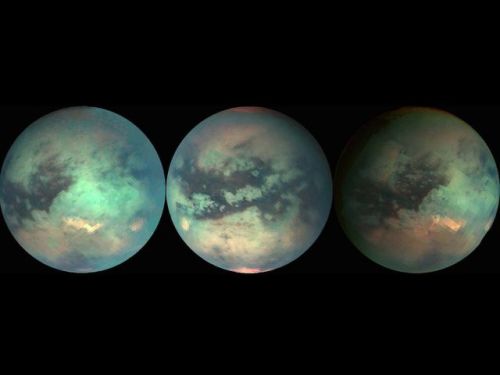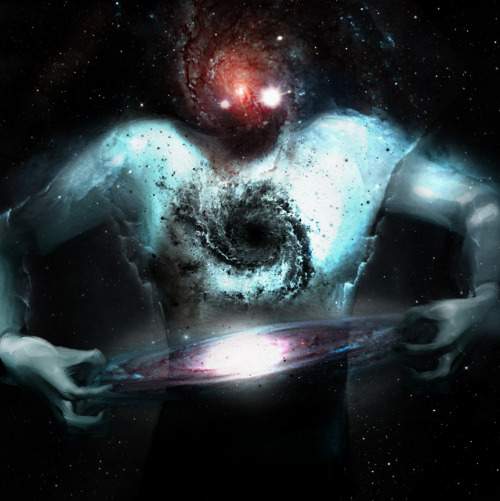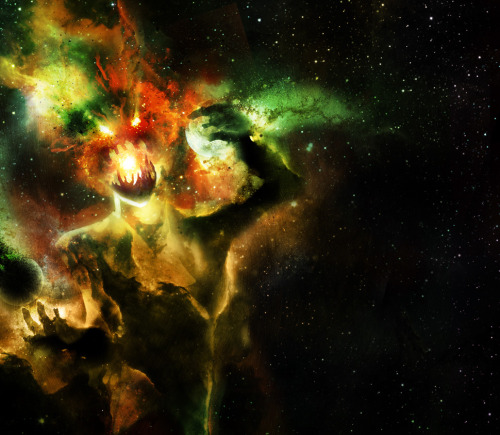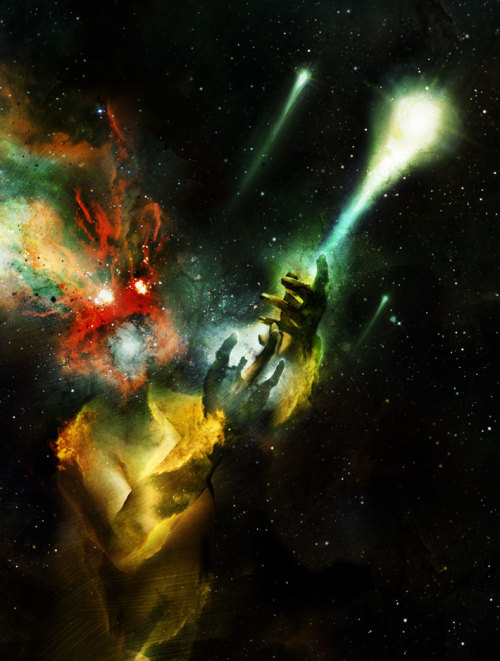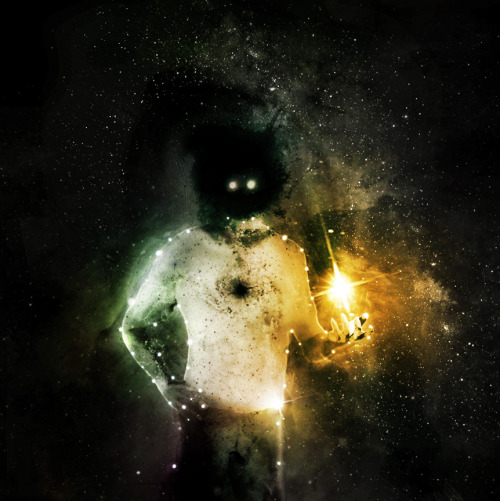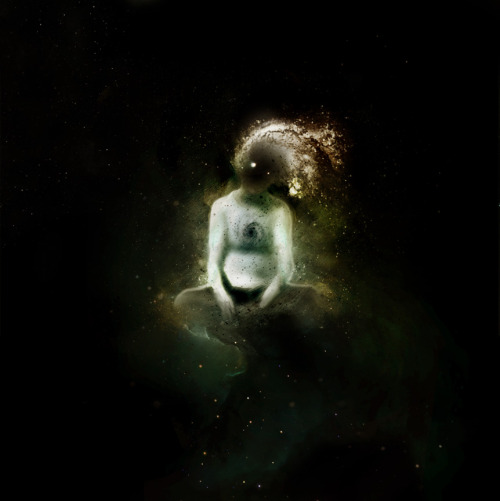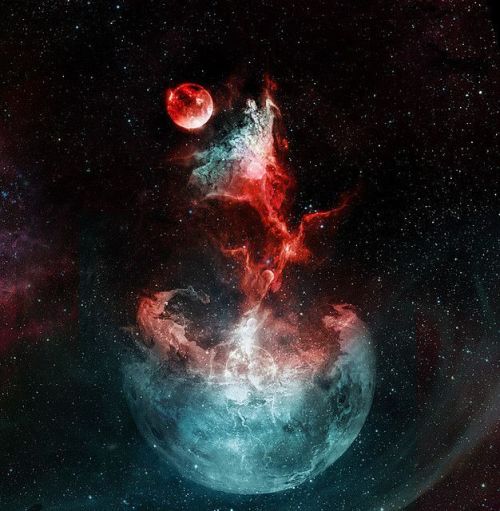Outofambit - Out Of Ambit

More Posts from Outofambit and Others
The galaxy sings in B flat. Fifty-seven octaves below middle C, hundreds of thousands of tiny stars with little worlds trailing atmospheres in elliptical orbits. Double-star systems, triple-star, more; planets, civilisations, dark matter, tangible matter, all circling, swarming, humming together in one enormous note, not bumping together but carrying a wave from the centre of their island universe, expanding out into space… Sound cannot exist in a vacuum. This is a widely known fact. And space is a vacuum, sure. But only when you look at it from here, from our tiny little world. Close your eyes, zoom out, and look at the celestial spheres from their view; and space isn’t so thin after all. Close your eyes, zoom in, and even our dense atmosphere is just atoms in a vacuum of their own. Sound as we know it, sure, that doesn’t exist outside our little stardust orb. It’s too small, too fragile. Too like ourselves. But where there’s movement and things to move, there’s sound. Sound waves can be small, only a few thousand nanometres trough-to-crest. And they can be massive, playing the celestial music of the spheres. Because in all that movement, the pulses of our discs and and lights and gravity wells, the stars dance. We are sound, the particles that carry a wave thousands of light-years across. We are the music of the celestial spheres. The galaxy sings in B flat.
Source
anexpansionlikegold
NATASHA I DEMAND YOU HAVE THESE FEELS WITH ME
(via reconfemmandoforares)

What are white holes? Many people are familiar with black holes as a 3-D hole that alters time and space where not even light can escape. However, what is our knowledge on white holes? Well, as your might suspect, white holes are the exact opposite of black holes. They expel matter into space at intense speeds with immense energy. Some cosmologists believe that on the other side of a black hole is a white hole. An interesting point that can either excite or disappoint you is that white holes cannot be entered from the outside. This means that there may never be physical proof of a white hole and will only stay in theories and mathematics.
Nevertheless, there is a paper written in 2012 that argued that the Big Bang was a white hole itself. Unlike black holes, white holes cannot be observed continuously and can only be observed at the time of the event. It also connects a new class called y-ray bursts to white holes. If you would like to read this interesting paper check out http://arxiv.org/pdf/1105.2776v2.pdf. Hopefully one day we can learn more about white holes and the mysteries they hold. The universe is fascinating and has secrets that are waiting to be unlocked the question is how much money are we willing to spend on the universe?
Take action today: http://www.penny4nasa.org/take-action/

White dwarfs polluted with planetary debris
The Hubble Space Telescope has found chemical evidence for the building blocks for rocky planets in an extremely unusual place: the atmospheres of two burned-out stars. Called white dwarfs, these stars are small, dim shadows of stars that would have once been like our sun, and they reside 150 light-years from Earth in the young star cluster of Hyades. Hubble’s spectroscopic observations identified silicon and low levels of carbon, both of which are strong indicators of a rocky material similar to that which makes up Earth. “When these stars were born, they built planets,” said Jay Farihi, lead author of the study, “and there’s a good chance they currently retain some of them… Based on the silicon-to-carbon ratio in our study, we can actually say that this material is basically Earth-like.” The material is thought to have ended up in the atmosphere of these stars after they collapsed into white dwarfs, and the larger planets in their solar system nudged asteroids into star-grazing orbits. The stars’ gravitational pull tore the asteroids apart, and the pulverised debris fell into a ring around the white dwarfs and were eventually funnelled inwards to pollute the stars themselves. The discovery suggests that rocky planets may commonly assemble around stars, and may help us to understand what will happen to our solar system in five billion years, when our own sun burns out.

Kepler-62 Has Two Water Worlds Circling in its Habitable Zone
NASA’s Kepler spacecraft has discovered two planets that are the most similar in size to Earth ever found in a star’s habitable zone — the temperate region where water could exist as a liquid.
The finding, reported online today in Science1, demonstrates that Kepler is closing in on its goal of finding a true twin of Earth beyond the Solar System, says theorist Dimitar Sasselov of the Harvard-Smithsonian Center for Astrophysics in Cambridge, Massachusetts, who is a member of the Kepler discovery team.
Both planets orbit the star Kepler-62, which is about two-thirds the size of the Sun and lies about 1,200 light years (368 parsecs) from the Solar System. The outermost planet from the star, Kepler-62f, has a diameter that is 41% larger than Earth’s and takes 267 days to circle its star. The inner planet, Kepler-62e, has a diameter 61% larger than Earth’s and a shorter orbit of 122 days.
Kepler detected the planets by recording the tiny decrease in starlight that occurs when either of them passes in front of their parent star. Astronomers used those measurements to calculate the planets’ relative size compared to that star.
Continue: Worlds Apart
"All Our Myriad Worlds Lie Whole"
I realize my blog is a bit scattered, and mostly fandom based, and probably no small amount of ridiculous, but I’m going to share a fandom-related story with you lovely followers. ^___^ What follows is a ramble-y account of my love affair with the Young Wizards Series.
I went to NYC for a choir trip during my senior year of high school (which was a lot longer ago than I feel like it should be…), and while we were there we visited a few museums…as one does on field trips, you know? Well, the highlight of our trip, for me, was definitely getting to weigh myself on all the planets, because of the scene in High Wizardry by Diane Duane. And, yes, I checked to make sure the ladies’ didn’t lead to Mars…I was disappointed to find just toilets, I’ll admit. (Just kidding! …well, mostly.)
It’s weird to realize the impact a book series can have on you, the ways in which the written word can influence you. But I’ve been reading the Young Wizards Series for so long now (and that’s a story in and of itself, which I’ll probably share at some point), that in many, many ways I feel as if the characters know me as well as I know them. I sometimes imagine that maybe, somewhere out there, there’s a universe where literary characters are all real, and are reading about our universe’s fantastical adventures. If the universe is infinite, and if there are an infinite number of universes, then who’s to say there isn’t a world like that, after all? Maybe in some place, Nita and Kit are reading about my Ordeal, or my little sister running off all over the universe (she does run off to Europe on occasion…the rest of the galaxy isn’t such a far stretch, at that…).
But back to my point. I stood there, my hand on the same asteroid that Kit and Nita discuss as having come such a long way, and for me the moment was beautifully surreal. I don’t think any of my classmates had such a profound experience as I did on that trip, because I finally had arrived at a place that I had been reading about since I first got into fantasy, and it was a real place, not something unattainable like The Leaky Cauldron, or a magical wardrobe to Narnia.
It was real, and I could touch it.
I think that’s the real power of words, right there; the real magic in our universe. That one person’s words can leave such a lasting impression on another human being isremarkableandpowerful, and has the same chance of being misused as the magic I so dearly love to read about. Because as surely as words can heal and inform and touch, they can just as surely be used to hurt and twist and maim.
And I think, maybe, much of my fascination with words and languages comes from Diane Duane’s books, too, as surely as my fascination with that asteroid came from her books.
I’ve been called childish and ridiculous—been told that no one can take me seriously. I’ve been bullied, and was pushed off swing sets when I was little, and I’ve been called all sorts of unpleasant names like “nerd” and “loser”, among others, and been told I read too much (as if there is such a thing!). Maybe these things are why I empathized so totally with Nita, that very first time I read So You Want to be a Wizard, but she kind of became something of a guiding light to me. At first it was just that Nita had a profound impact on me, as a character with whom I shared so much, but later, as I grew older and continued to reread the series, it became less Nita, and more the entire feel of the series. There is so much good in this series, so many “words to live by” and the characters are so unconsciously good that to the reader it becomes second nature, too. Kit and Nita are like two bright standard bearers in a world that seems progressively darker, that more and more places emphasis on characters who do bad things for the right reasons, instead of character who do good things because that is the right reason.
I don’t even know if I can still call the impact these books had on me “subtle” because I feel like I’ve embraced the philosophies of the characters with every fiber of my being.
I’m going into anthropology, probably with an emphasis on archaeology, which is all about understanding other peoples, and in some cases preserving those cultures which are rapidly losing themselves to “modernization”. Maybe this makes me silly, but whenever I think about what I’ll be doing later in my life, working to understand and write about cultures unlike my own, I can’t help but also hear the words of the Oath in the back of my mind. I live by those words. I think they are perfect, and important, and I still read them out loud every time I get to that page, because whether or not they can make me a wizard, they are still a promise that I made to myself when I was eleven, and I intend to keep that promise—magic or not.

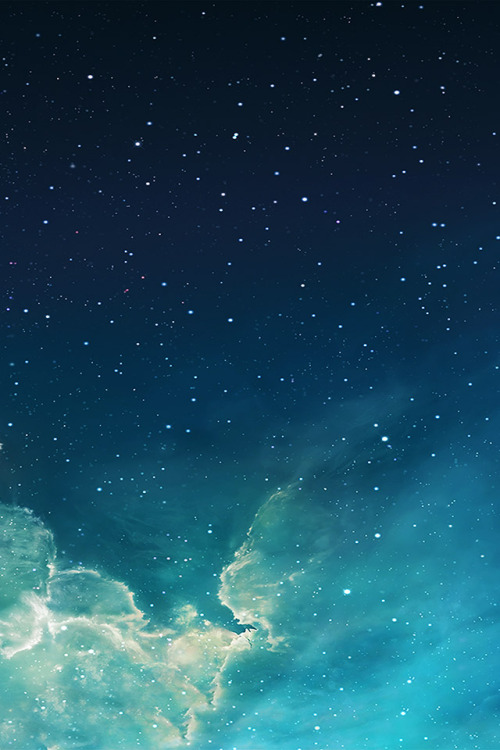


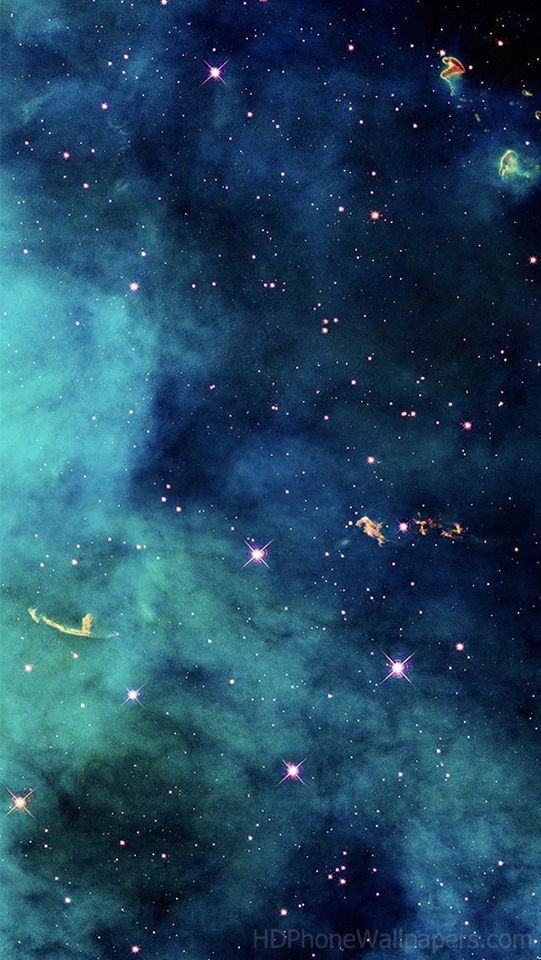

Blue




‘In Life’s name, and for Life’s sake,I say that I will use the Art for nothing but the service of that Life. I will guard growth and ease pain. I will fight to preserve what grows and lives well in its own way; and I will change no object or creature unless its growth and life, or that of the system of which it is part, are threatened. To these ends, in the practice of my Art, I will put aside fear for courage, and death for life, when it is right to do so—till Universe’s end.’
Young Wizards is my favorite book series because where else are you going to find a book where a twelve year old, an alien elf prince, a talking tree, and a crystal centipede all get together to do surgery on the sun.
-
 camsyn-xiv reblogged this · 4 years ago
camsyn-xiv reblogged this · 4 years ago -
 ahlis-xiv liked this · 7 years ago
ahlis-xiv liked this · 7 years ago -
 justcallhimcapn reblogged this · 7 years ago
justcallhimcapn reblogged this · 7 years ago -
 victorinozeus liked this · 7 years ago
victorinozeus liked this · 7 years ago -
 viendotv reblogged this · 9 years ago
viendotv reblogged this · 9 years ago -
 vgvikdal liked this · 9 years ago
vgvikdal liked this · 9 years ago -
 curi0uscanine reblogged this · 9 years ago
curi0uscanine reblogged this · 9 years ago -
 theodoragottwald reblogged this · 9 years ago
theodoragottwald reblogged this · 9 years ago -
 aurltas reblogged this · 10 years ago
aurltas reblogged this · 10 years ago -
 aurltas liked this · 10 years ago
aurltas liked this · 10 years ago -
 alphabetical0rder reblogged this · 10 years ago
alphabetical0rder reblogged this · 10 years ago -
 nyecl reblogged this · 10 years ago
nyecl reblogged this · 10 years ago -
 nyecl liked this · 10 years ago
nyecl liked this · 10 years ago -
 solar-cryptid reblogged this · 10 years ago
solar-cryptid reblogged this · 10 years ago -
 solar-cryptid liked this · 10 years ago
solar-cryptid liked this · 10 years ago -
 paintmesomethingbeautiful liked this · 10 years ago
paintmesomethingbeautiful liked this · 10 years ago -
 morganismm reblogged this · 10 years ago
morganismm reblogged this · 10 years ago -
 zaxles reblogged this · 10 years ago
zaxles reblogged this · 10 years ago -
 apothacoffee reblogged this · 10 years ago
apothacoffee reblogged this · 10 years ago -
 griffinfire liked this · 10 years ago
griffinfire liked this · 10 years ago -
 cherry-kompot liked this · 10 years ago
cherry-kompot liked this · 10 years ago -
 cutthecrap liked this · 10 years ago
cutthecrap liked this · 10 years ago -
 esemismoale liked this · 10 years ago
esemismoale liked this · 10 years ago -
 beeahna liked this · 10 years ago
beeahna liked this · 10 years ago -
 ijustwanttobeaselkie reblogged this · 11 years ago
ijustwanttobeaselkie reblogged this · 11 years ago -
 ashleyashleydeneadenea-blog-blog liked this · 11 years ago
ashleyashleydeneadenea-blog-blog liked this · 11 years ago -
 highspeedrodeo reblogged this · 11 years ago
highspeedrodeo reblogged this · 11 years ago -
 internet-grab-my-tumblr reblogged this · 11 years ago
internet-grab-my-tumblr reblogged this · 11 years ago -
 623for648 liked this · 11 years ago
623for648 liked this · 11 years ago -
 mirror-wolf reblogged this · 11 years ago
mirror-wolf reblogged this · 11 years ago -
 irons-in-the-web reblogged this · 11 years ago
irons-in-the-web reblogged this · 11 years ago -
 irons-in-the-web liked this · 11 years ago
irons-in-the-web liked this · 11 years ago -
 pikkypq liked this · 11 years ago
pikkypq liked this · 11 years ago -
 lairofsentinel reblogged this · 11 years ago
lairofsentinel reblogged this · 11 years ago -
 devianta reblogged this · 11 years ago
devianta reblogged this · 11 years ago -
 mismehellawes reblogged this · 11 years ago
mismehellawes reblogged this · 11 years ago -
 xreaperofyourfacex reblogged this · 11 years ago
xreaperofyourfacex reblogged this · 11 years ago -
 you-got-the-triforce reblogged this · 11 years ago
you-got-the-triforce reblogged this · 11 years ago -
 inkdropsandoilslicks liked this · 11 years ago
inkdropsandoilslicks liked this · 11 years ago
A personal temporospatial claudication for Young Wizards fandom-related posts and general space nonsense.
288 posts
